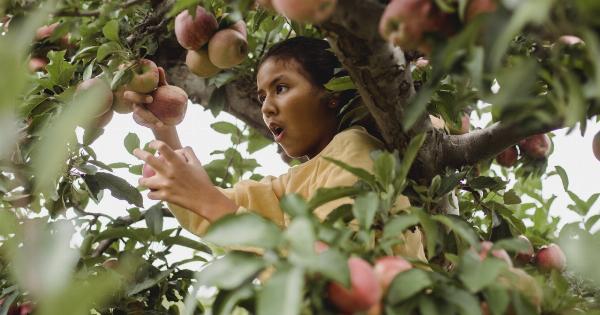Anthocyanins are a type of flavonoid, which is a class of plant pigments that give fruits, vegetables, and flowers their vibrant colors. These compounds are responsible for the reds, purples, blues, and even blacks found in various plant tissues.
Sources of Anthocyanins
Anthocyanins are commonly found in a variety of fruits and vegetables. Some of the richest sources include:.
- Blueberries
- Blackberries
- Strawberries
- Raspberries
- Cherries
- Grapes
- Purple cabbage
- Purple sweet potatoes
- Eggplant
- Red onions
The Health Benefits of Anthocyanins
Anthocyanins have gained considerable attention in recent years due to their potential health-promoting properties. Numerous studies have suggested that these compounds possess antioxidant, anti-inflammatory, and anticancer activities.
Antioxidant Effects
Anthocyanins are powerful antioxidants, which means they can neutralize harmful free radicals in the body. Free radicals are highly reactive molecules that can damage cells, DNA, and proteins, leading to chronic diseases and aging.
By scavenging these free radicals, anthocyanins help protect the body against oxidative stress and reduce the risk of various conditions, including heart disease and neurodegenerative disorders.
Anti-Inflammatory Properties
Chronic inflammation is a major contributor to the development of several diseases, such as cancer, diabetes, and cardiovascular disorders.
Anthocyanins have been found to exhibit potent anti-inflammatory effects by modulating the activity of inflammatory enzymes and inhibiting the production of pro-inflammatory molecules. These properties help reduce inflammation and may contribute to the prevention and management of inflammatory conditions.
Anthocyanins and Cancer
One of the most exciting areas of research surrounding anthocyanins is their potential role in cancer prevention and treatment.
Several studies have demonstrated the anticancer properties of these compounds, showing promising results in both in vitro and animal studies.
1. Inhibition of Tumor Growth
Anthocyanins have been shown to inhibit the growth and proliferation of various cancer cells. They can induce apoptosis, which is programmed cell death, in cancer cells, thereby preventing their uncontrolled growth.
Furthermore, these compounds have been found to disrupt the formation of new blood vessels around tumors, a process known as angiogenesis, which is essential for tumor growth and metastasis.
2. Anti-Metastatic Effects
Metastasis is the spread of cancer cells from the primary tumor to other parts of the body. Anthocyanins have been found to inhibit the invasion and migration of cancer cells, thereby reducing their ability to metastasize.
These compounds can also suppress the activity of matrix metalloproteinases, enzymes that facilitate the breakdown of the extracellular matrix and promote cancer cell invasion.
3. Protection Against DNA Damage
Anthocyanins can protect DNA from oxidative damage caused by free radicals and other reactive compounds. They enhance the activity of DNA repair enzymes, which help maintain the integrity of the genetic material.
By preventing DNA damage and mutations, these compounds may reduce the risk of cancer development.
4. Enhancement of Chemotherapy and Radiotherapy
Studies have demonstrated that anthocyanins can enhance the efficacy of chemotherapy drugs and radiotherapy in killing cancer cells. These compounds sensitize cancer cells to the effects of treatment and make them more susceptible to cell death.
This suggests that combining anthocyanin-rich foods or supplements with conventional cancer treatments may improve their effectiveness.
5. Prevention of Hormone-Dependent Cancers
Some types of cancers, such as breast and prostate cancer, are hormone-dependent, meaning they are influenced by hormones in the body.
Anthocyanins have been found to interfere with hormone-related pathways and inhibit the growth of hormone-dependent cancer cells. This suggests that these compounds may have potential as preventive agents for these types of cancers.
Conclusion
Anthocyanins are natural compounds found in a variety of fruits and vegetables, renowned for their vibrant colors.
Besides adding visual appeal to food, these compounds exhibit numerous health benefits, including potent antioxidant and anti-inflammatory effects. Moreover, anthocyanins have shown promising anticancer properties, such as inhibiting tumor growth, preventing metastasis, protecting DNA, enhancing conventional cancer treatments, and preventing hormone-dependent cancers.
Including anthocyanin-rich foods in your diet may provide a natural defense against cancer development and progression.



























